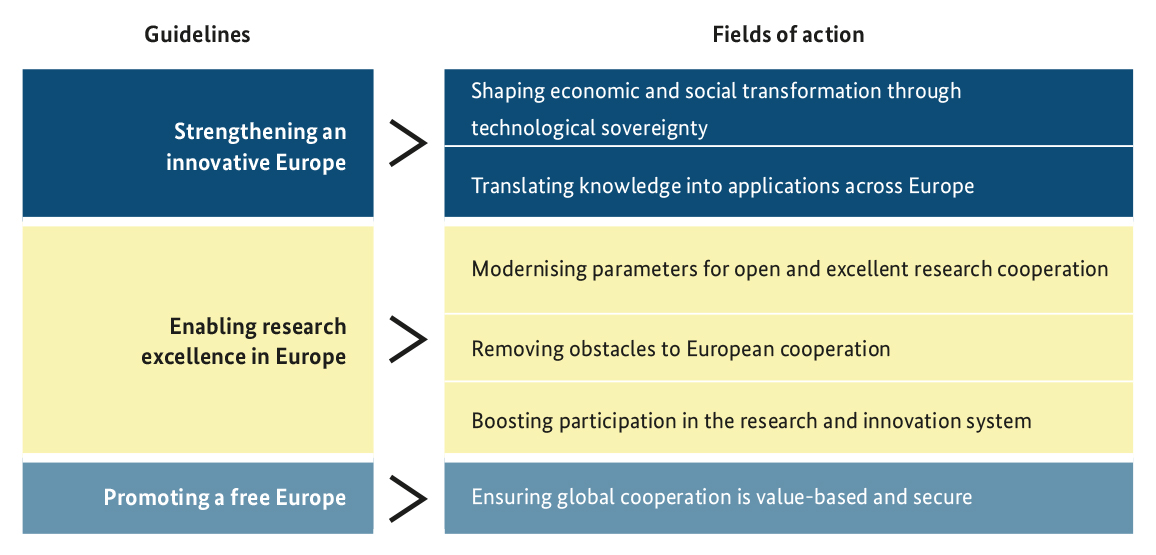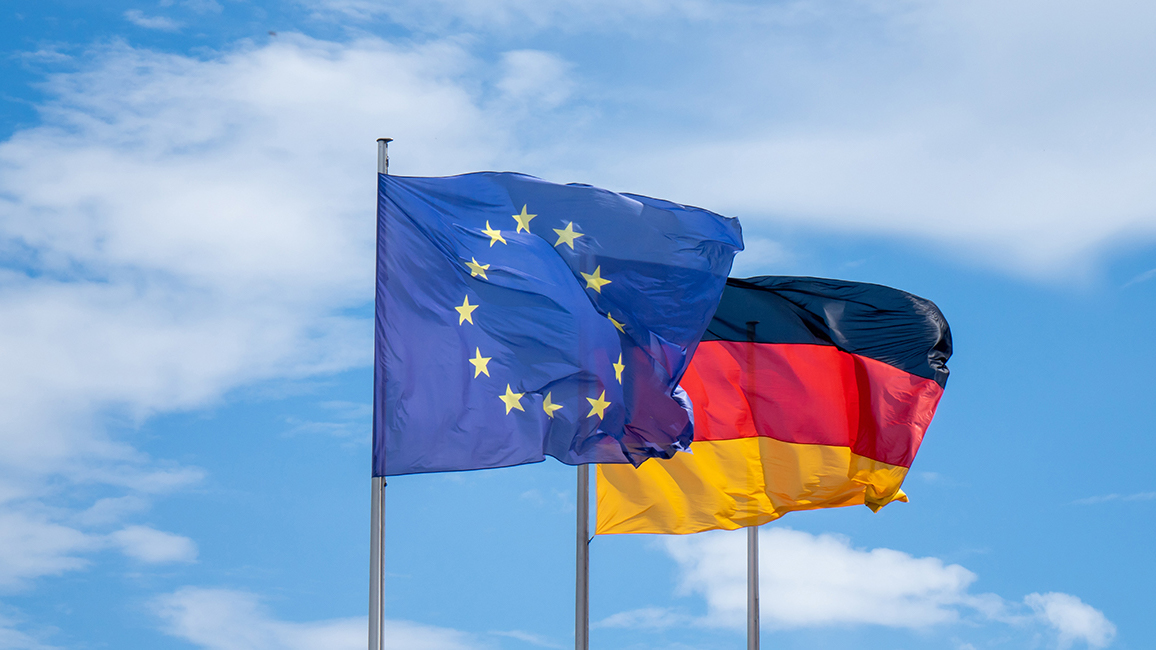Mode of operation of the National Action Plan
In order to achieve the goals set out in the guidelines, the National Action Plan for the European Research Area follows a clear structure, from goal to instrument. Along similar lines to the Future Research and Innovation Strategy, the success of the Action Plan’s implementation will be quantified.
The guidelines point the way forward and provide orientation for the actions of the large number of actors in Germany who are responsible for the European Research Area. Each of the guidelines leads to one or more fields of action, which operationalise the goal established by the guideline. The fields of action are also closely based on the needs of the German research and innovation landscape. The Future Research and Innovation Strategy highlights potential which must be leveraged further so that Germany remains a driving force for innovation in the European Research Area in future. The National Action Plan is based on the analysis of strengths and weaknesses set out in the Future Research and Innovation Strategy, and specifies the goals for the European dimension.
Each field of action is underpinned by a range of measures. The measures specifically do not intend to provide an all-encompassing picture of the Federal Government’s ongoing activities relating to the European Research Area. Instead, the selection of measures sets new priorities and focal points based on the consultation on the European Research Area conducted from November 2022 to February 2023.

Guidelines and fields of action of the National Action Plan for the European Research Area
BMFTR
The further development of a strong European Research Area can only be achieved through concerted action at national and European level. The key instrument for the implementation of the European Research Area is the EU Framework Programme for Research and Innovation. The European Research Area’s goals and implementation should therefore be closely interlinked with the Framework Programme. The Action Plan thus establishes an advisory structure to promote the successful interlocking of these levels. The aim is also to ensure the optimal involvement of the Länder (federal states) and the scientific community in Germany.
German engagement for the European Research Area is efficiently and transparently evaluated by means of the monitoring at EU level and indicators. Alongside the indicators already contained in the European Research Area monitoring at EU level, we also draw on selected indicators from the Future Research and Innovation Strategy. When evaluating Germany’s contribution to the implementation of the European Research Area, the following indicators are particularly relevant and should be increased over the period from 2024 to 2027.
Guideline 1: Strengthening an innovative Europe
- Share of national public R&D expenditure committed to joint programmes and initiatives, research infrastructures and European Partnerships (establishment of baseline data)
- Environmentally related government R&D budget, percentage of total government R&D budget (latest available figure: 2.7% in 2020)
- Proportion of innovating firms collaborating with Higher Education Institutions or Research Performing Organisations out of all innovating firms (latest available figure: n/a)
- Business start-up rate (new start-ups in relation to the total number of businesses) in the high-tech sector (latest available figure: 3.58% in 2019)
- Number of EU co-patents registered from within Germany (latest available figure: n/a)
Guideline 2: Enabling research excellence in Europe
- Germany’s share of the grants received by the EU Member States in the current EU Framework Programme for Research and Innovation, Horizon Europe, by comparison with the previous programme, Horizon 2020 (latest available figure for Horizon 2020: 16.3%)
- Share of publications available in open access (green, gold and diamond) (latest available figure: 39.9% in 2019)
- Share of researchers receiving transferable skills training (latest available figure: 35.1% in 2019)
- Movement from an employee to a job from another, from one year to the next in the field of science and technology (latest available figure: 8.8% in 2020)
- Absolute number of employees in research and development (latest available figure: 733,831 in 2020)
- Share of professorships held by women (latest available figure: 27% in 2021)
Guideline 3: Promoting a free Europe
- Score for international co-publications in the European Innovation Scoreboard (latest score: 134.17 in 2023)
- Academic Freedom Index score for Germany (latest score: fifth place with a score of 0.96 in 2022)
These overarching, quantitative indicators measure Germany’s total engagement in support of the European Research Area, to which the measures set out in the Action Plan make an important contribution. They are exemplary for the extensive activities in Germany relating to the policy goals set at national and European level. At the same time, there is no direct causal link between the measures and the indicator results. The quantitative indicators are contextualised by qualitative reports and complemented by an advisory structure at national level.
Implementation of the National Action Plan
With "Forum.EU", the Federal Government is setting up a new advisory structure to better integrate the relevant stakeholders from research and innovation and is establishing a transparent measurement of success through a monitoring system.





